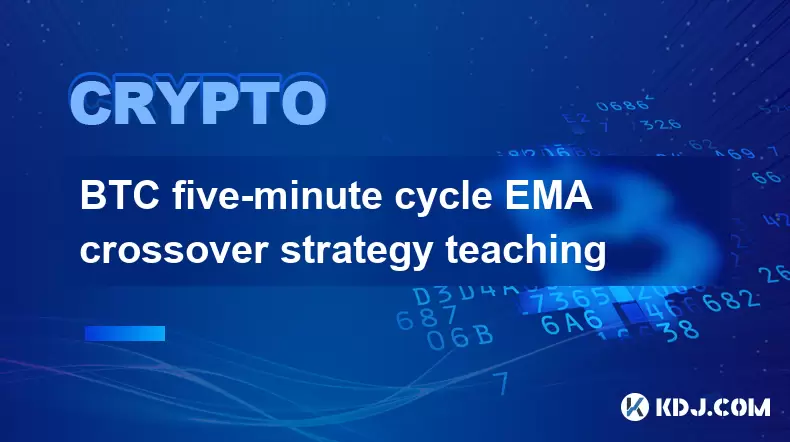-
 Bitcoin
Bitcoin $116700
0.24% -
 Ethereum
Ethereum $3973
4.34% -
 XRP
XRP $3.283
7.68% -
 Tether USDt
Tether USDt $1.000
0.01% -
 BNB
BNB $789.8
2.27% -
 Solana
Solana $176.2
3.31% -
 USDC
USDC $0.9999
0.00% -
 Dogecoin
Dogecoin $0.2238
5.14% -
 TRON
TRON $0.3389
-0.51% -
 Cardano
Cardano $0.7907
4.03% -
 Stellar
Stellar $0.4527
10.02% -
 Hyperliquid
Hyperliquid $41.07
4.27% -
 Sui
Sui $3.794
1.77% -
 Chainlink
Chainlink $19.49
10.40% -
 Bitcoin Cash
Bitcoin Cash $580.9
0.74% -
 Hedera
Hedera $0.2617
4.32% -
 Avalanche
Avalanche $23.41
3.67% -
 Ethena USDe
Ethena USDe $1.001
-0.03% -
 Litecoin
Litecoin $122.4
1.38% -
 Toncoin
Toncoin $3.364
1.49% -
 UNUS SED LEO
UNUS SED LEO $8.988
0.37% -
 Shiba Inu
Shiba Inu $0.00001295
2.82% -
 Uniswap
Uniswap $10.62
5.75% -
 Polkadot
Polkadot $3.922
4.46% -
 Dai
Dai $1.000
0.01% -
 Bitget Token
Bitget Token $4.494
2.15% -
 Monero
Monero $268.0
-1.30% -
 Cronos
Cronos $0.1523
3.68% -
 Pepe
Pepe $0.00001127
4.43% -
 Aave
Aave $285.4
4.85%
BTC five-minute cycle EMA crossover strategy teaching
The BTC five-minute cycle EMA crossover strategy uses 9 and 21-period EMAs to identify short-term trading opportunities in Bitcoin's volatile market.
Jun 01, 2025 at 12:28 am

BTC five-minute cycle EMA crossover strategy teaching
The BTC five-minute cycle EMA crossover strategy is a popular method among traders looking to capitalize on short-term price movements in Bitcoin. This strategy utilizes Exponential Moving Averages (EMAs) to identify potential entry and exit points based on the crossovers of these averages. By focusing on a five-minute chart, traders can make quick decisions and potentially benefit from the volatility of Bitcoin.
Understanding Exponential Moving Averages (EMAs)
Exponential Moving Averages are a type of moving average that places more weight on recent prices, making them more responsive to new information. In the context of the BTC five-minute cycle EMA crossover strategy, traders typically use two EMAs: a shorter-term EMA and a longer-term EMA. The most common settings are the 9-period EMA and the 21-period EMA, though these can be adjusted based on individual preferences and market conditions.
Setting Up the Chart
To implement the BTC five-minute cycle EMA crossover strategy, traders need to set up their trading chart correctly. Here’s how to do it:
- Open your trading platform and select Bitcoin as the asset you want to trade.
- Choose a five-minute time frame for the chart.
- Add the 9-period EMA to the chart. This can usually be done by selecting 'Indicators' or 'Studies', then choosing 'EMA' and setting the period to 9.
- Add the 21-period EMA to the chart in a similar manner, setting the period to 21.
Once these EMAs are added, you should see two lines on your chart: the 9-period EMA will be closer to the price action, and the 21-period EMA will be smoother and further away.
Identifying Entry Signals
The core of the BTC five-minute cycle EMA crossover strategy revolves around the crossover of the 9-period EMA and the 21-period EMA. Here’s how to identify entry signals:
- Bullish Signal: A bullish signal occurs when the 9-period EMA crosses above the 21-period EMA. This indicates that the short-term momentum is increasing, and it may be a good time to enter a long position.
- Bearish Signal: Conversely, a bearish signal occurs when the 9-period EMA crosses below the 21-period EMA. This suggests that the short-term momentum is decreasing, and it might be an opportunity to enter a short position.
Executing Trades
Once you have identified a signal, it’s time to execute the trade. Here are the steps to follow:
- For a bullish signal, place a buy order at the current market price or slightly above the current price to ensure you get filled. Set a stop-loss order below the recent low to manage risk.
- For a bearish signal, place a sell order at the current market price or slightly below the current price. Set a stop-loss order above the recent high to limit potential losses.
Managing Trades and Exits
Managing trades effectively is crucial in the BTC five-minute cycle EMA crossover strategy. Here’s how to manage your positions:
- Monitor the EMAs: Keep an eye on the 9-period and 21-period EMAs. If the 9-period EMA crosses back over the 21-period EMA in the opposite direction, it might be a signal to exit the trade.
- Set Profit Targets: Determine your profit targets before entering the trade. For example, you might aim for a fixed percentage gain or a specific price level.
- Use Trailing Stops: Consider using trailing stops to lock in profits as the price moves in your favor. This can help you maximize gains while still protecting against reversals.
Risk Management
Risk management is essential in any trading strategy, including the BTC five-minute cycle EMA crossover strategy. Here are some tips to manage risk:
- Position Sizing: Only risk a small percentage of your trading capital on each trade. A common rule of thumb is to risk no more than 1-2% of your account on a single trade.
- Stop-Loss Orders: Always use stop-loss orders to limit potential losses. Place them at logical levels, such as below recent lows for long positions or above recent highs for short positions.
- Avoid Overtrading: The five-minute cycle can be very fast-paced. Avoid the temptation to overtrade, as this can lead to increased transaction costs and potential losses.
Backtesting and Optimization
Before using the BTC five-minute cycle EMA crossover strategy with real money, it’s wise to backtest and optimize it. Here’s how to do that:
- Use Historical Data: Apply the strategy to historical data to see how it would have performed in the past. Most trading platforms offer backtesting tools that allow you to do this.
- Adjust Parameters: Experiment with different EMA periods. For instance, you might try a 12-period EMA and a 26-period EMA to see if it improves results.
- Evaluate Performance: Look at key metrics such as win rate, average win/loss, and drawdown to assess the strategy’s effectiveness. Adjust your approach based on these findings.
Practical Example
To illustrate how the BTC five-minute cycle EMA crossover strategy works in practice, consider the following example:
- Scenario: On a five-minute Bitcoin chart, the 9-period EMA crosses above the 21-period EMA at a price of $40,000.
- Action: You enter a long position at $40,000, placing a stop-loss order at $39,800 (just below the recent low).
- Outcome: The price moves to $40,500, and the 9-period EMA remains above the 21-period EMA. You decide to exit the trade at $40,500, securing a profit of $500 per Bitcoin.
This example demonstrates how the strategy can be applied in real-time trading situations.
Frequently Asked Questions
Q: Can the BTC five-minute cycle EMA crossover strategy be used for other cryptocurrencies?
A: Yes, the strategy can be applied to other cryptocurrencies, but it’s important to backtest it on the specific asset you’re interested in. Different cryptocurrencies may have different volatility and trading patterns, which can affect the strategy’s performance.
Q: How often should I check the chart when using this strategy?
A: Given the five-minute cycle, it’s advisable to check the chart at least every five minutes. However, you should also set up alerts for EMA crossovers to ensure you don’t miss potential signals.
Q: Is it necessary to use both a 9-period and a 21-period EMA, or can I use different periods?
A: While the 9-period and 21-period EMAs are commonly used, you can experiment with different periods. The key is to find a combination that works well for the specific market conditions and your trading style.
Q: How can I improve the accuracy of the BTC five-minute cycle EMA crossover strategy?
A: To improve accuracy, consider combining the EMA crossover strategy with other indicators, such as the Relative Strength Index (RSI) or the Moving Average Convergence Divergence (MACD). Additionally, always backtest and refine your strategy based on historical performance.
Disclaimer:info@kdj.com
The information provided is not trading advice. kdj.com does not assume any responsibility for any investments made based on the information provided in this article. Cryptocurrencies are highly volatile and it is highly recommended that you invest with caution after thorough research!
If you believe that the content used on this website infringes your copyright, please contact us immediately (info@kdj.com) and we will delete it promptly.
- Bitcoin, Litecoin, and Avalanche: Decoding the Crypto Buzz in the Big Apple
- 2025-08-09 00:30:12
- Pengu Takes Flight: Can This Solana Meme Coin Conquer the Top 3?
- 2025-08-09 00:50:13
- Coinbase's Big Bet: DEX Trading and the Everything App Vision
- 2025-08-09 01:30:12
- Ethereum and Shiba Inu: Navigating the Bull Move
- 2025-08-09 00:35:12
- Dogecoin, AI Coins, and CMC Listings: What's Hot and What's Not
- 2025-08-09 01:35:51
- Navigating the Crypto Market in 2025: Smart Decisions for Meme Coin Investing
- 2025-08-09 00:55:55
Related knowledge

Can the Bitcoin protocol be changed?
Aug 07,2025 at 01:16pm
Understanding the Bitcoin ProtocolThe Bitcoin protocol is the foundational set of rules that govern how the Bitcoin network operates. It defines every...

How are Bitcoin transactions verified?
Aug 08,2025 at 06:57am
Understanding Bitcoin Transaction VerificationBitcoin transactions are verified through a decentralized network of nodes and miners that ensure the le...

How does decentralization make Bitcoin secure?
Aug 08,2025 at 09:35am
Understanding Decentralization in BitcoinDecentralization is a foundational principle of Bitcoin's architecture and plays a critical role in its secur...

What are some common misconceptions about Bitcoin?
Aug 07,2025 at 07:22pm
Bitcoin is Just Like Regular MoneyA widespread misconception is that Bitcoin functions identically to traditional fiat currencies like the US dollar o...

What is the role of nodes in the Bitcoin network?
Aug 08,2025 at 04:14pm
Understanding the Function of Nodes in the Bitcoin NetworkNodes are fundamental components of the Bitcoin network, serving as the backbone that ensure...

Is Bitcoin a solution for inflation?
Aug 08,2025 at 04:57am
Understanding Inflation and Its Impact on Traditional CurrenciesInflation refers to the sustained increase in the price of goods and services over tim...

Can the Bitcoin protocol be changed?
Aug 07,2025 at 01:16pm
Understanding the Bitcoin ProtocolThe Bitcoin protocol is the foundational set of rules that govern how the Bitcoin network operates. It defines every...

How are Bitcoin transactions verified?
Aug 08,2025 at 06:57am
Understanding Bitcoin Transaction VerificationBitcoin transactions are verified through a decentralized network of nodes and miners that ensure the le...

How does decentralization make Bitcoin secure?
Aug 08,2025 at 09:35am
Understanding Decentralization in BitcoinDecentralization is a foundational principle of Bitcoin's architecture and plays a critical role in its secur...

What are some common misconceptions about Bitcoin?
Aug 07,2025 at 07:22pm
Bitcoin is Just Like Regular MoneyA widespread misconception is that Bitcoin functions identically to traditional fiat currencies like the US dollar o...

What is the role of nodes in the Bitcoin network?
Aug 08,2025 at 04:14pm
Understanding the Function of Nodes in the Bitcoin NetworkNodes are fundamental components of the Bitcoin network, serving as the backbone that ensure...

Is Bitcoin a solution for inflation?
Aug 08,2025 at 04:57am
Understanding Inflation and Its Impact on Traditional CurrenciesInflation refers to the sustained increase in the price of goods and services over tim...
See all articles

























































































